I don't know what Bert is, but try this sample code and see if it helps you.
import pandas as pd
import numpy as np
import sklearn
import sklearn.ensemble
import sklearn.metrics
from sklearn.utils import shuffle
from io import StringIO
import re
from nltk.corpus import stopwords
from sklearn.model_selection import train_test_split
from sklearn.feature_extraction.text import CountVectorizer
from sklearn.linear_model import LogisticRegression
from sklearn.metrics import accuracy_score, f1_score, precision_score, recall_score
import lime
from lime import lime_text
from lime.lime_text import LimeTextExplainer
from sklearn.pipeline import make_pipeline
df = pd.read_csv('C:\\Users\\ryans\\OneDrive\\Desktop\\Briefcase\\PDFs\\1-ALL PYTHON & R CODE SAMPLES\\A - GITHUB\\Natural Language Processing - Amazon Reviews\\Datafiniti_Amazon_Consumer_Reviews_of_Amazon_Products.csv')
# let's experiment with some sentiment analysis concepts
# first we need to clean up the stuff in the independent field of the DF we are workign with
df.replace('\'','', regex=True, inplace=True)
df['review_title'] = df[['reviews.title']].astype(str)
df['review_text'] = df[['reviews.text']].astype(str)
df['review_title'] = df['reviews.title'].str.replace('\d+', '')
df['review_text'] = df['reviews.text'].str.replace('\d+', '')
# get rid of special characters
df['review_title'] = df['reviews.title'].str.replace(r'[^\w\s]+', '')
df['review_text'] = df['reviews.text'].str.replace(r'[^\w\s]+', '')
# get rid of double spaces
df['review_title'] = df['reviews.title'].str.replace(r'\^[a-zA-Z]\s+', '')
df['review_text'] = df['reviews.text'].str.replace(r'\^[a-zA-Z]\s+', '')
# convert all case to lower
df['review_title'] = df['reviews.title'].str.lower()
df['review_text'] = df['reviews.text'].str.lower()
list_corpus = df["review_text"].tolist()
list_labels = df["reviews.rating"].tolist()
X_train, X_test, y_train, y_test = train_test_split(list_corpus, list_labels, test_size=0.2, random_state=40)
vectorizer = CountVectorizer(analyzer='word',token_pattern=r'\w{1,}', ngram_range=(1, 3), stop_words = 'english', binary=True)
train_vectors = vectorizer.fit_transform(X_train)
test_vectors = vectorizer.transform(X_test)
logreg = LogisticRegression(n_jobs=1, C=1e5)
logreg.fit(train_vectors, y_train)
pred = logreg.predict(test_vectors)
accuracy = accuracy_score(y_test, pred)
precision = precision_score(y_test, pred, average='weighted')
recall = recall_score(y_test, pred, average='weighted')
f1 = f1_score(y_test, pred, average='weighted')
print("accuracy = %.3f, precision = %.3f, recall = %.3f, f1 = %.3f" % (accuracy, precision, recall, f1))
list_corpus[3]
c = make_pipeline(vectorizer, logreg)
class_names=list(df.review_title.unique())
explainer = LimeTextExplainer(class_names=class_names)
idx = 3
exp = explainer.explain_instance(X_test[idx], c.predict_proba, num_features=6, labels=[1, 1])
print('Document id: %d' % idx)
print('Predicted class =', class_names[logreg.predict(test_vectors[idx]).reshape(1,-1)[0,0]])
print('True class: %s' % class_names[y_test[idx]])
print ('Explanation for class %s' % class_names[1])
print ('\n'.join(map(str, exp.as_list(label=1))))
exp = explainer.explain_instance(X_test[idx], c.predict_proba, num_features=6, top_labels=2)
print(exp.available_labels())
exp.show_in_notebook(text=False)

https://towardsdatascience.com/explain-nlp-models-with-lime-shap-5c5a9f84d59b
https://marcotcr.github.io/lime/tutorials/Lime%20-%20multiclass.html
https://towardsdatascience.com/understanding-model-predictions-with-lime-a582fdff3a3b
